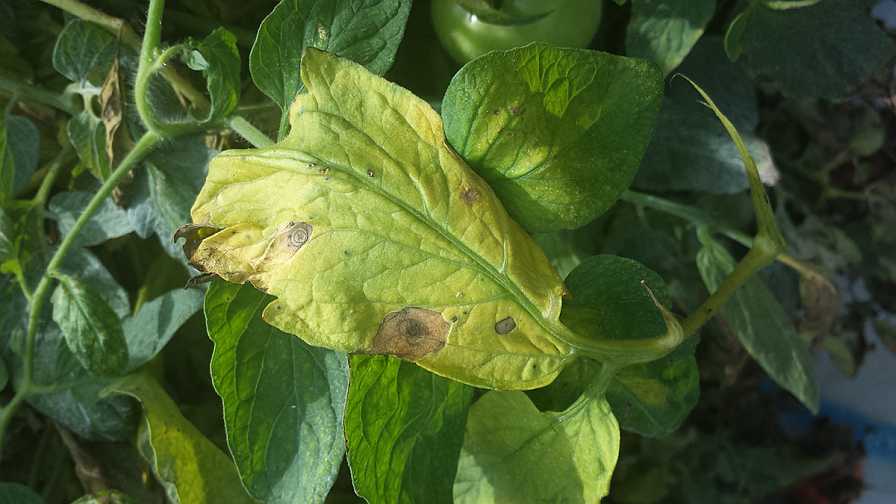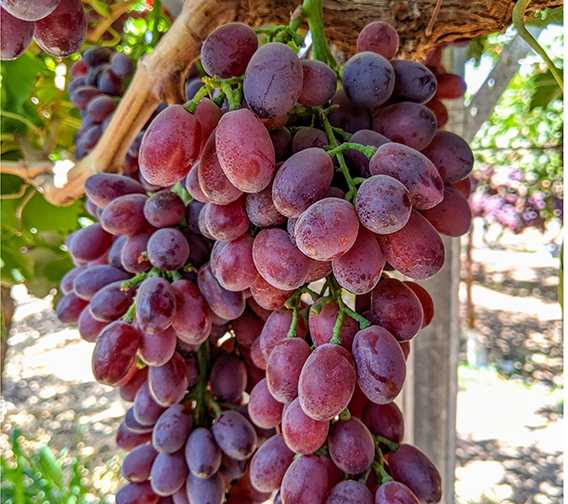Take the Right Aim to Tame Target Spot of Tomato
Target spot is often a problem on tomatoes in Florida. The disease is caused by the fungus Corynespora cassiicola. Target spot is frequently misdiagnosed as in its early stages as symptoms are difficult to recognize and can be confused with bacterial spot and early blight.
Identification
The name derives from the bull’s eye appearance that is often displayed in lesions caused by the disease. Since concentric rings are not always visible, and not all lesions with concentric rings are target spot, it is recommended that a laboratory diagnosis be obtained to ensure a correct diagnosis.
On tomato leaves and stems, foliar symptoms of target spot consist of brown-black lesions with subtle, concentric rings, giving them a target-like appearance. These can sometimes be confused with early blight. With early blight, the lesions are often associated with a general chlorosis of the leaf. On tomato fruit, lesions are more distinct. Small, brown, slightly sunken flecks are seen initially and may resemble abiotic injury such as sandblasting. As fruits mature, the lesions become larger and coalesce, resulting in large, pitted areas. Advanced symptoms include large, deeply sunken lesions, often with visible dark-gray-to-black
fungal growth in the center.
Survival and Spread
In addition to tomato, this fungus has a wide host range and may attack such diverse crops as papaya, passion vine, pepper, cowpea, cantaloupe, squash, and snap beans.
The pathogen has several means for survival and spread in the field. It may survive up to two years in crop debris. The wide host range of this fungus contributes to survival of the fungus in Florida. Airborne conidia is the primary means of spread in the field. Optimum conditions for disease development include temperatures from 68°F to 82°F and long periods of free moisture.
Management Methods
Growers should rotate fields to avoid carryover on crop residue and avoid rotations among solanaceous crops. Eliminate any volunteers and weed species that can act as a host.
Currently, target spot is controlled primarily by applications of protectant fungicides. Note that tank-mix sprays of copper fungicides and maneb do not provide acceptable levels of target spot control. Widespread resistance has been documented to Qol fungicides, including both strobilurins and non-strobilurin fungicides in FRAC Group 11, and their use is not recommended for target spot control.
In addition, moderate resistance has been documented in the SDHI fungicides FRAC Group 7. Use these with caution and pay attention to rotating with alternative modes of action. In recent efficacy trials at the University of Florida — Approvia Top (Difenoconazole, Benzovindiflupyr, Syngenta), Inspire Super (Difenoconazole, Cyprodinil, Syngenta), Luna Tranquility (Fluopyram and Pyrimethanil, Bayer CropScience), Revus Top (Mandipropamid, Difenoconazole, Syngenta), Rhyme (Flutriafol, FMC Corp.), and Scala (Pyrimethanil, Bayer CropScience) were top performers.
Consult UF/IFAS recommendations for currently labeled fungicides for target spot control in Florida vegetables.











